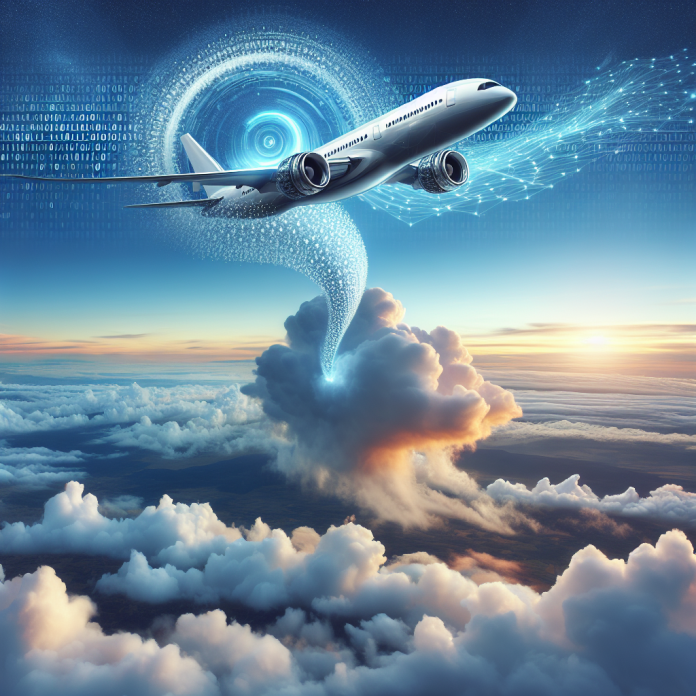**Unlocking the Power of AI in Aerospace Innovations**
The aerospace industry has always been at the forefront of technological advancements, pushing the boundaries of what is possible and exploring new horizons. In recent years, the integration of artificial intelligence (AI) has revolutionized the way aircraft are designed, manufactured, and operated. AI has the potential to transform the aerospace industry, ushering in a new era of innovation and efficiency.
**The Rise of AI in Aerospace**
AI, a branch of computer science that aims to create intelligent machines that can learn and adapt, has made significant strides in recent years. With the advent of powerful computers and advanced algorithms, AI has become increasingly integrated into various industries, including aerospace. In the aerospace industry, AI is being harnessed to optimize aircraft design, improve manufacturing processes, enhance safety, and increase operational efficiency.
**AI in Aircraft Design**
One of the most intriguing applications of AI in aerospace is in aircraft design. Traditionally, aircraft design has been a time-consuming and labor-intensive process, requiring engineers to manually test and iterate on various design configurations. With AI, however, this process has been streamlined and accelerated. AI algorithms can analyze vast amounts of data to identify optimal design configurations, leading to more efficient and aerodynamic aircraft.
For example, Airbus has been using AI algorithms to optimize the design of their aircraft wings. By inputting design parameters and performance objectives, AI algorithms can identify the most efficient wing design in a fraction of the time it would take a human engineer. This has led to significant improvements in fuel efficiency and overall performance for Airbus aircraft.
**AI in Manufacturing**
In addition to aircraft design, AI is also being used to revolutionize the manufacturing processes in the aerospace industry. With the use of AI-powered robots and automation, manufacturers can greatly increase production efficiency and reduce costs. AI algorithms can analyze manufacturing data in real-time to identify potential issues and optimize production schedules.
Boeing, for example, has implemented AI-powered robots in their manufacturing plants to assemble aircraft components. These robots can work faster and with greater precision than human workers, leading to faster production times and higher quality aircraft. By leveraging AI in manufacturing, aerospace companies can streamline their operations and deliver products more efficiently to customers.
**AI in Safety and Operations**
Safety is paramount in the aerospace industry, and AI is playing a crucial role in enhancing safety measures and improving operational efficiency. AI-powered systems can analyze vast amounts of data from aircraft sensors and flight data recorders to detect potential issues before they become safety hazards. This proactive approach to safety has the potential to save lives and prevent accidents.
For instance, GE Aviation has developed an AI-powered predictive maintenance system that can analyze data from aircraft engines to identify potential maintenance issues before they occur. By predicting when components are likely to fail, airlines can proactively schedule maintenance and avoid costly maintenance-related delays. This not only improves safety but also reduces downtime and increases aircraft reliability.
**The Future of Aerospace Innovations through AI**
As AI continues to evolve and improve, the possibilities for aerospace innovations are limitless. From autonomous aircraft to AI-powered air traffic management systems, the future of aerospace will be shaped by the integration of AI technologies. The combination of AI with other emerging technologies, such as 3D printing and advanced materials, will further propel the aerospace industry into a new era of innovation and efficiency.
The potential benefits of AI in aerospace are immense, but there are also challenges that need to be addressed. Data privacy and security concerns, ethical considerations, and regulatory challenges all need to be carefully navigated as AI becomes more prevalent in the aerospace industry. However, with careful planning and collaboration, the aerospace industry is poised to reap the rewards of AI technologies in the years to come.
**Conclusion**
In conclusion, AI is transforming the aerospace industry in unprecedented ways, unlocking new possibilities for innovation and efficiency. From aircraft design to manufacturing to safety and operations, AI is revolutionizing every aspect of the aerospace industry. As AI technologies continue to advance, the aerospace industry will continue to evolve, pushing the boundaries of what is possible and shaping the future of air travel. The integration of AI in aerospace is a testament to human ingenuity and creativity, and it is poised to revolutionize the way we travel and explore the skies.

